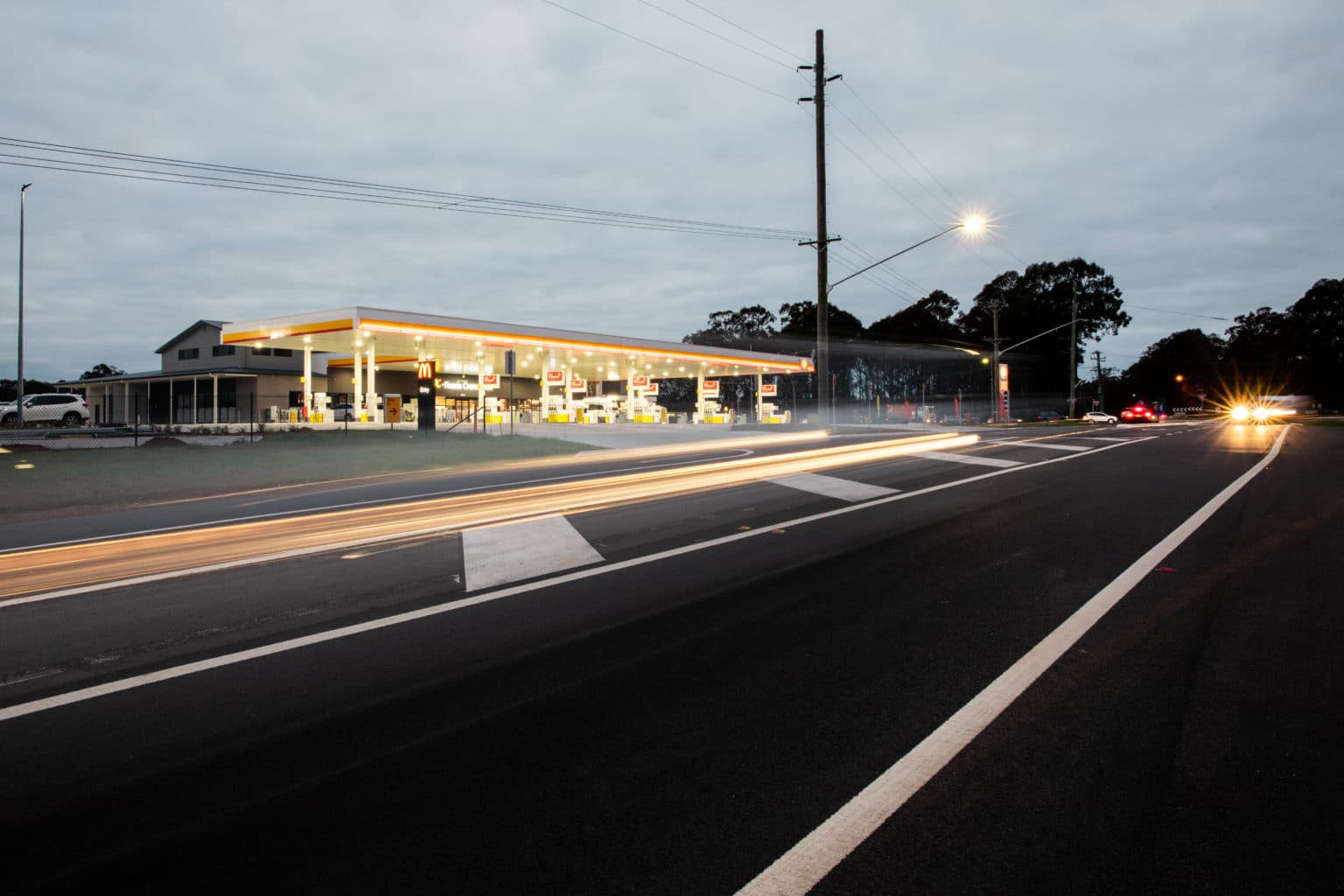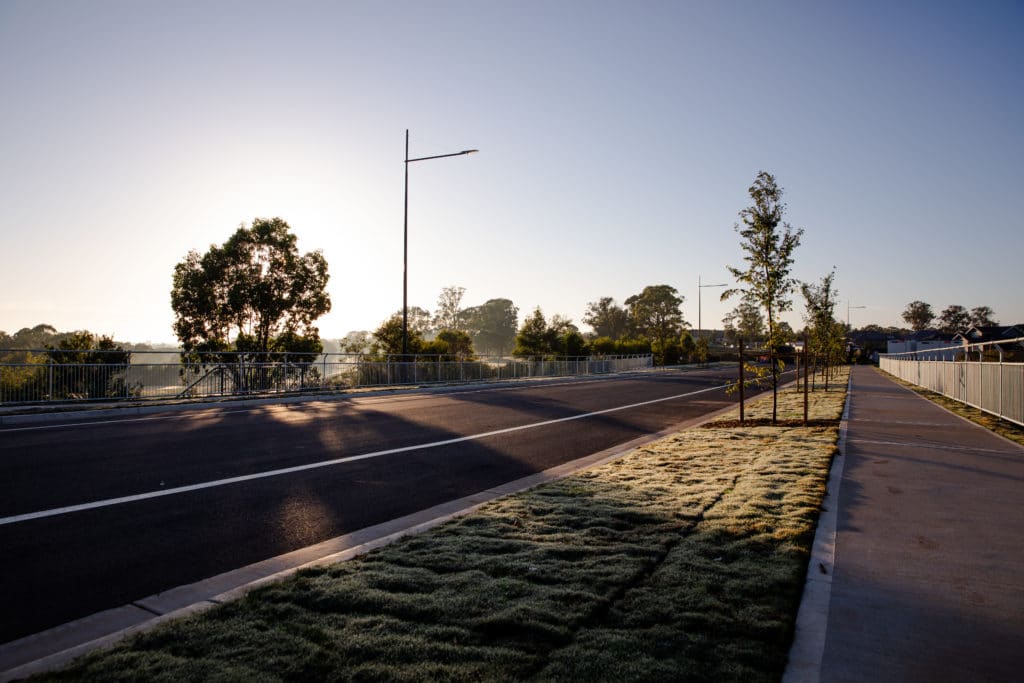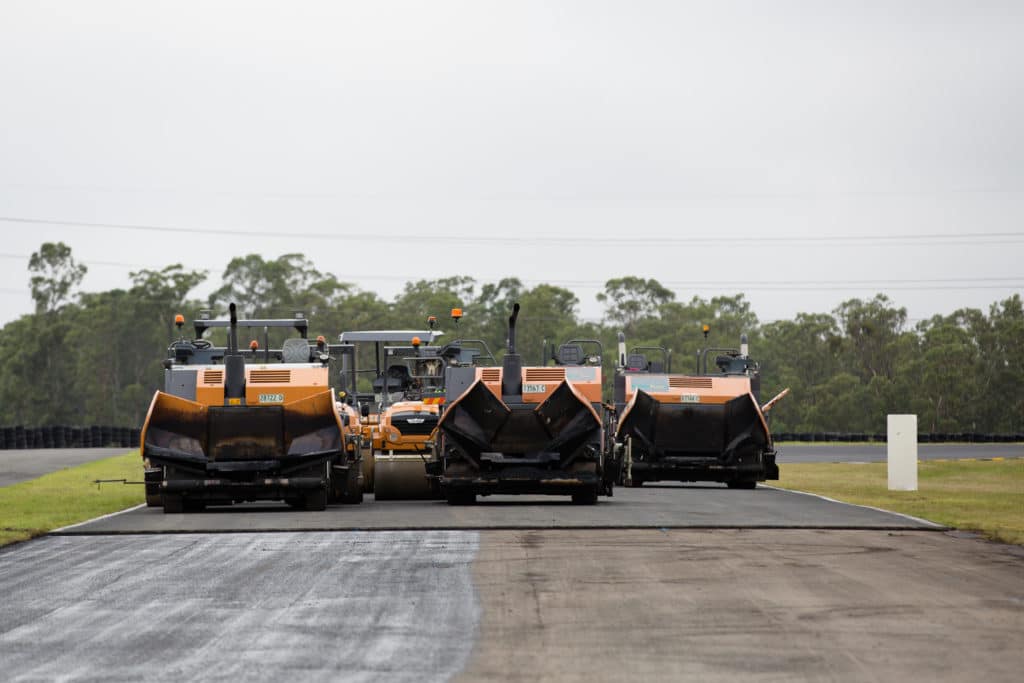
Constructing paved surfaces with particularly fine finishes involves getting each of a series of layers and steps just right. If any important details are glossed over throughout the process, the final pavement will suffer and likely deteriorate at an accelerated rate. This kind of negligence is a budget killer, causing costs to balloon during or soon after a given project’s completion.
First comes compaction, a deceptively simple-looking process that must be handled with the utmost care. Both overcompaction and undercompaction contribute to a number of structural problems in completed works later on. Native soil must be assessed and brought to an ideal moisture level as well. By paying special attention to this first, key step, we are able to guarantee a much better-finished product.
Following completion of the compaction phase, the sub base must be put in place. This layer can be thought of as the hardest working layer of all as it bears the brunt of the weight and downward forces applied to the surface. Gravel, concrete and other materials can be chosen for this layer as per availability and project specifications. A suitable base aggregate is selected to go over this layer and followed by a suitably thick layer of paver – generally asphalt or concrete. Asphalt layered on top of properly compacted layers of soil, subbase, and base material can withstand its intended load much more effectively, but it can also be sealed for increased durability.
A proper seal can make quite a difference in the length of time a completed road or paved pathway holds up. In the chip sealing process, a mixture of asphalt and water is applied to an existing asphalt road, then gravel is spread and compacted in place to prevent it from coming off before the treatment has enough time to cure. Once cured, remaining loose gravel is removed, leaving a much more resistant road surface that adapts well to difficult weather conditions and a variety of vehicle types. Road surface preparation and finishing of this nature is no issue for our team to handle.

A completed road does not last long in the absence of well-designed drains and gutters. Even roads with perfectly produced layers would quickly succumb to water and erosion without a permanent solution in place.
JK Williams can handle the construction of kerb, gutter and a variety of drain types as well. Owing to innovative efforts from our team members in 2019, we have even developed a faster, more cost-effective means of rapidly producing grated drains. In contrast with the traditional, prepped and hand-finished method, our slip form process creates excellent results with fine finishes in a fraction of the time.
Our team has experience with projects both big and small, creating everything from large road extensions to small pedestrian footpaths.
We have machinery on hand to accommodate whatever size pathway your project may call for. Whether you are looking for an attractive sidewalk to line a finished road or a safe cycleway with a custom width, we can help make it happen.
Projects that require custom transit shelters such as bus stops are within our capabilities as well. JK Williams can also help handle road projects that require special underground installations. We have assisted in the installation of optic fibre and other such utility lines, coordinating efforts with other specialists to ensure optimal results. We are experienced in planning for these types of requirements and managing them effectively alongside third-party teams as needed.
We have worked with live traffic conditions on multiple projects over our history.
Our team has implemented TCP phase shifts to help sustain a reasonable flow of traffic during construction hours on particularly demanding stretches of active motorway. If your project calls for interaction with live traffic, then you can trust that you are in good hands by choosing to work with JK Williams.
Our team has worked with as many as three paving machines used in tandem to install a pristine race track with absolutely no pavement joints across a 12.5 metre carriageway width.
Race track construction tolerances leave very little room for any deviation. Completed stretches of track must be entirely seamless. We are pleased to have tackled this challenge with no complications and, ultimately, happy clients. Achieving such a feat also depended on our source for working materials. Coordinating our installation processes with the best asphalt and material providers is just another facet of what we do at JK Williams.
